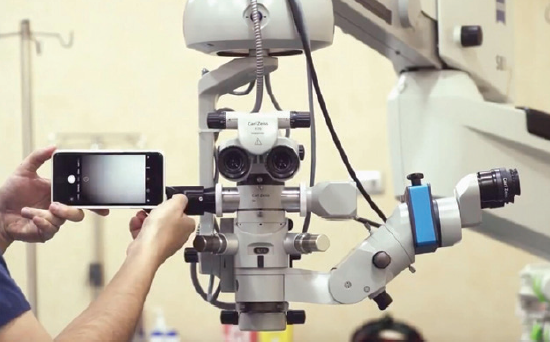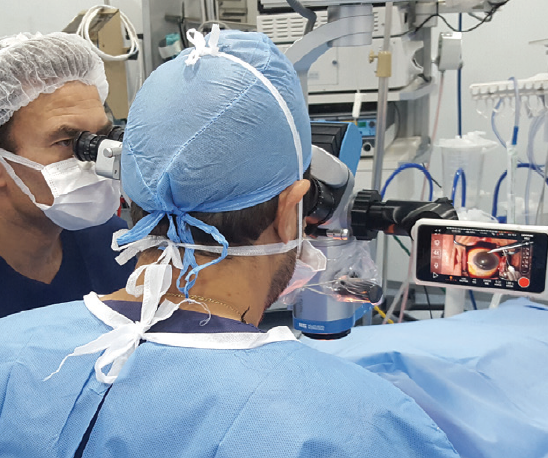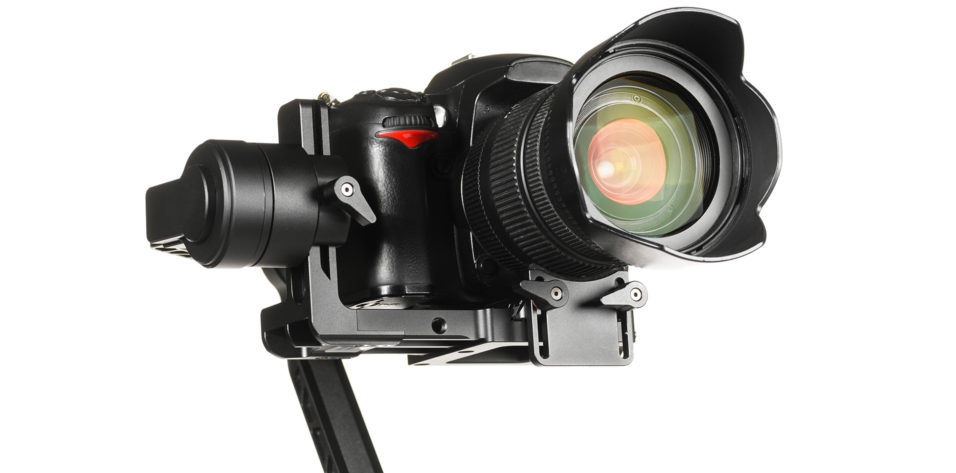
The COVID-19 pandemic has increased the need for innovation in ophthalmic medical education, and surgical videos are an important part of the solution. They are already used at just about every congress and seminar to share information with and demonstrate techniques to colleagues. Presentations can be easily supported by prerecorded or live-streamed surgical videos. The advantage of the latter is that attendees can be permitted to ask questions and can watch techniques as they are being performed in real time. Revolutionary!
As a lifelong student and longtime speaker and teacher, I find surgical videos to be the most effective vehicle for delivering medical education. The materials published online by my colleagues in the United States and Europe are valuable, but I noticed a lack of content coming out of Latin America. The problem, I soon realized, is a lack of access to the costly recording technologies available in other countries. I decided to search for an alternative, less expensive method to record surgical videos so that more surgeons can share their expertise.
FINDING AN ALTERNATIVE
Many of the alternatives for recording live surgery in the OR require an external drive, a technician for setup, and a tedious process of extracting the files and accessing them from other computers. Several methods and devices that facilitate the recording of live surgery at an affordable price have been described in the literature. These include a variety of do-it-yourself approaches that repurpose smartphones or make use of consumer-grade cameras and video systems, or tripod mounts in addition to video capture/transfer devices and consumer video systems. (For a few examples, see Alternative Methods to Record Surgery.) My search led me to MicroRec (Custom Surgical; Figure 1), an optical system that can be attached to microscopic equipment and that can connect to the performant cameras of smartphones, facilitating the recording of live surgery at an affordable cost.
Alternative Methods to Record Surgery
By Michele Corry, Associate Editor
Repurposed Consumer-Grade Cameras
Consumer-grade cameras installed on the microscope. A consumer-grade video system can be installed on a surgical microscope mount to record the surgical field. This method often requires the use of an external hard drive to store recorded video files because the cameras have limited storage. Ichihashi et al evaluated the utility of a 4K consumer camera for this purpose and found it to be easier to install and capable of significantly higher-quality imaging than previously available conventional video systems. Consumer-grade video systems cost much less than medical-grade systems and, with the appropriate supplemental devices, are capable of recording high-definition (HD) surgical videos.1
Mounted consumer-grade cameras. Compact, portable, ultra-HD cameras are an inexpensive and unobtrusive method of recording high-quality surgical videos in external facial and ophthalmic plastic surgery. Commercially available units include the GoPro, RX0 II (Sony), and the HD-100 Full HD HDMI (Aida Imaging). Their compact size allows them to be affixed to the operating surgeon’s head mount to facilitate the intraoperative recording of oculoplastic and strabismus surgeries.2
These cameras can also be mounted on flexible tripods in the OR. These tripods are designed for use in areas and on surfaces unsuitable for traditional tripods; they can be wrapped around poles and rods, which increases versatility.3
PORTABLE MEDIA PLAYERS/RECORDERS
In ORs equipped with analogue video recording systems, a video capture device/transfer system can be used to create digital surgical videos. Real-time analogue video input is converted to a digital format by a video capture device and stored on an external hard drive. This type of system is especially useful for surgeons in training because of its portability and affordability compared with other portable recording devices and systems. Additionally, because the video capture device and recording media are separate components as opposed to the built-in memory storage most video capture devices are equipped with, most ORs worldwide can use such a system to create digital recordings at a relatively low cost.4
Commercially available video capture devices include Pinnacle Video Capture/Transfer (Pinnacle Systems) and UltraStudio (Blackmagic Design).
1. Ichihashi T, Hirabayashi, Nagahara M. Potential utility of a 4K consumer camera for surgical education in ophthalmology. J Ophthalmol. 2017;2017:4374521.
2. Nair AG, Kamal S, Dave TV, et al. Surgeon point-of-view recording: using a high-definition head-mounted video camera in the operating room. Indian J Ophthalmol. 2015;63(10):771-774.
3. Nair AG, Kamal S, Singh S. A “flexible tripod” mounted video camera: an economical and effective method to record oculoplastic surgeries. Indian J Ophthalmol. 2019;67(9):1460-1462.
4. Bhogal MM, Angunawela RI, Little BC. Use of low-cost video recording device in reflective practice in cataract surgery. J Cataract Refract Surg. 2010;36(4):542-546.

Figure 1. The MicroRec optical system.
FUNCTIONALITY
The MicroRec optical system can be installed quickly on any type of microscopic equipment. The device’s small size and light weight make it extremely portable. When I first started using it, I found that the entire dynamic of recording surgeries in my OR changed. Because a smartphone is both the recording and the storage medium with this system, I can record and upload surgical videos to the cloud quickly and edit them using apps on my phone.
SHARING KNOWLEDGE
After transitioning to this technology, I began using sequences of the videos I record during surgery in my presentations. When I share them on social media, these sequences receive considerable interest from viewers.
By taking advantage of a smartphone’s connectivity, the MicroRec optical system can be used to display live video on external screens via Chromecast or Apple TV (Figure 2). With the use of certain apps, live surgeries performed around the world could be incorporated into webinars.

Figure 2. Live video of the surgical field recorded with the MicroRec optical system, which can stream live video to external screens via Chromecast or Apple TV.
I predict that surgical videos will be a major component of medical education for the duration of the current pandemic and quite possibly beyond.





